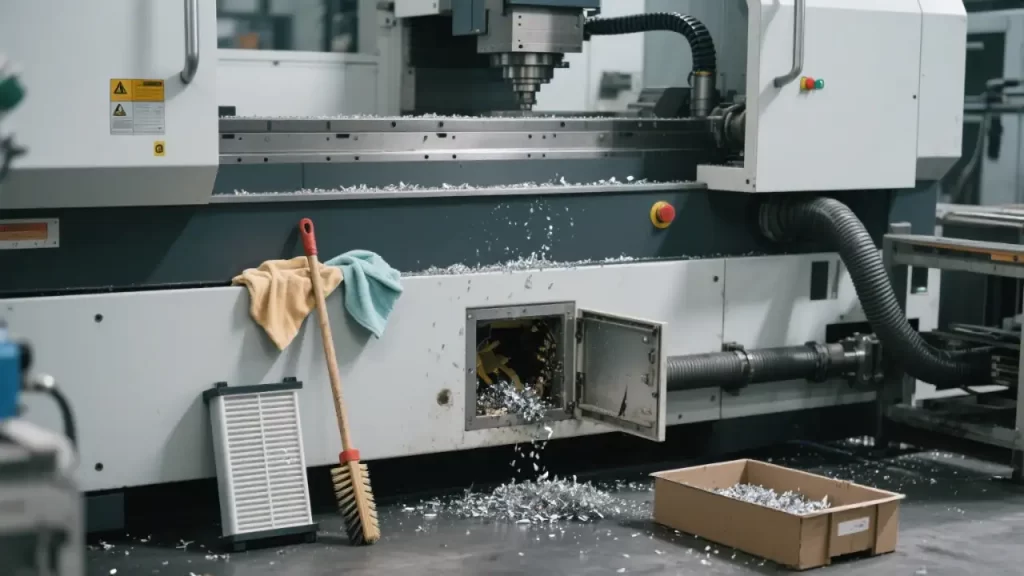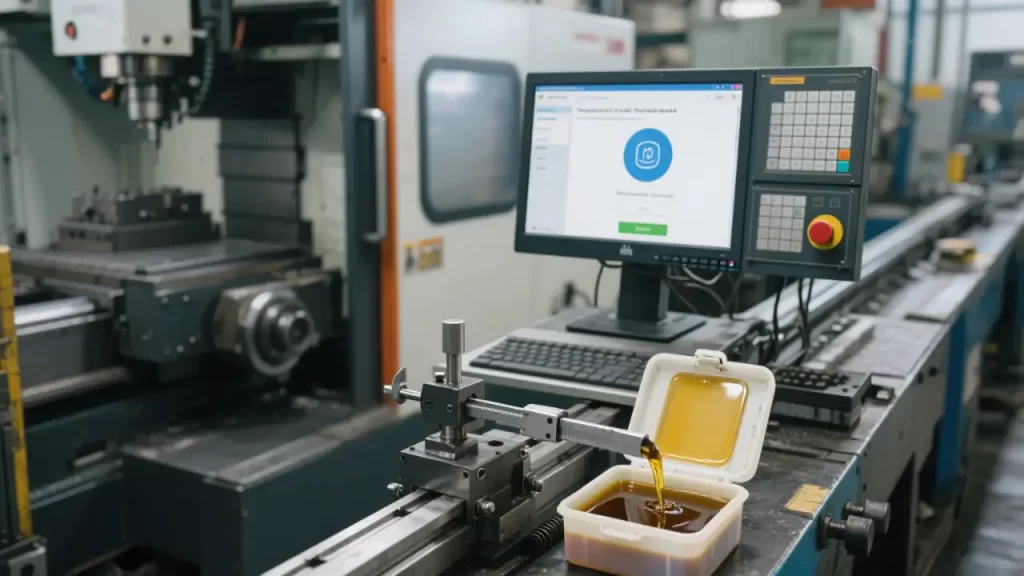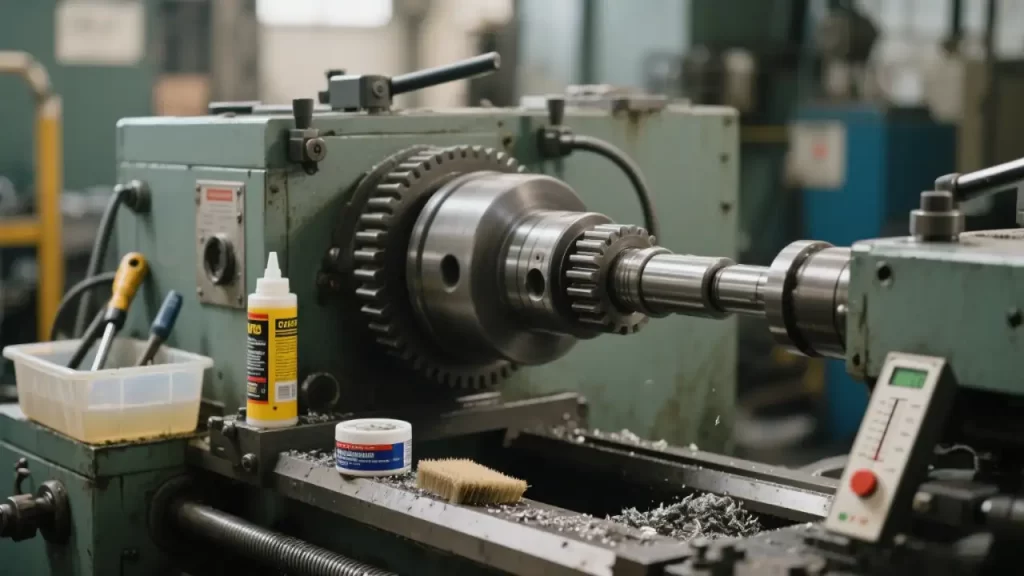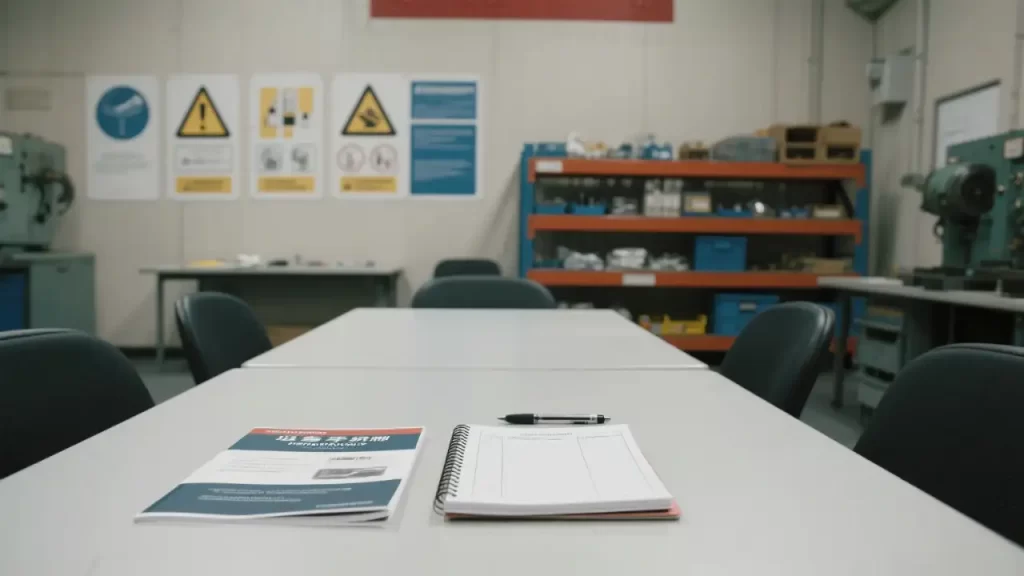CNC Machine Maintenance: Daily, Monthly, Annual Tips
CNC machines are vital for modern manufacturing, offering precision and efficiency. A structured maintenance plan ensures consistent performance, extends equipment lifespan, and prevents costly downtime. Dedicate 10-15 minutes daily, 1-1.5 hours monthly, and 2-3 hours annually to keep your CNC machines running smoothly.
1. Daily Maintenance: Ensure Peak Performance
Daily tasks prevent wear and maintain accuracy, forming the foundation for reliable CNC machine operation.

Cleaning Routine
A clean machine supports productivity. Use a soft cloth or brush to remove chips, dust, and debris from surfaces, guide rails, and the work area daily. Clean coolant system filters to ensure proper fluid flow, critical for tool cooling.
Lubrication Check
Proper lubrication reduces friction. Check oil levels for guide rails and spindles daily to prevent overheating. For automatic systems, verify oil lines and pumps function correctly to minimize wear.
Functionality Test
Safety is key. Test the emergency stop button and safety devices daily for instant response. Inspect power cables and use a multimeter to ensure stable voltage, preventing disruptions.
Tool and Workpiece Inspection
Tool quality impacts machining. Use a magnifying glass to check tools for wear or cracks, replacing them as needed. Ensure workpiece clamps are secure to prevent movement during operation.
2. Monthly Maintenance: Proactive Reliability
Monthly checks focus on deeper inspections to maintain CNC machine reliability and prevent performance issues.

Spindle and Drive System
A smooth spindle ensures quality output. Listen for unusual noises or vibrations monthly using a stethoscope, indicating potential bearing wear. Inspect ball screws and gears, applying grease and cleaning debris.
Coolant System Management
Coolant extends tool life. Check coolant concentration monthly with a refractometer (5%-10%) and adjust as needed. Clean the coolant tank and check pumps and hoses for leaks to ensure circulation.
Electrical System Inspection
A stable electrical system is essential. Inspect cables for wear or looseness, tightening with a screwdriver. Clear dust from the control cabinet with compressed air to ensure heat dissipation.
Calibration and Precision Testing
Precision defines CNC machining. Test positioning accuracy monthly with a standard workpiece, adjusting parameters if needed. Verify servo motors and guide rail parallelism with precision gauges.
3. Annual Maintenance: Comprehensive Overhaul
Annual maintenance restores CNC machines to peak condition, ensuring long-term efficiency.

Mechanical Inspection
Mechanical components drive performance. Use precision tools annually to check guide rails, bearings, and spindles for wear or deformation. Replace worn drive components like ball screws.
CNC System Optimization
The control unit is critical. Install software updates annually to enhance performance and security. Back up machining programs and inspect sensors for reliable signal transmission.
Lubrication System Overhaul
A robust lubrication system reduces wear. Drain and clean the lubrication tank annually, refilling with fresh oil. Inspect pumps and lines, clearing blockages or replacing parts.
Professional Calibration
Hire technicians annually to calibrate the machine with high-precision tools, ensuring axis movement meets factory standards. Test with standard workpieces to correct machining errors.
4. Best Practices for CNC Maintenance
Maximize maintenance with these practices for safety and efficiency.

Safety First
Power off and lock out the machine before maintenance. Wear gloves and safety glasses to protect against debris or splashes, ensuring safe and efficient tasks.
Operator Training
Train operators regularly on maintenance and safety protocols, including emergency stop usage. Familiarity with the machine’s manual reduces errors.
Maintenance Logs
Log maintenance tasks, dates, and issues. Review logs to identify patterns and refine schedules for data-driven efficiency.
Quality Consumables
Use manufacturer-recommended lubricants and coolants. Verify replacement parts like bearings meet specifications to extend machine life.



